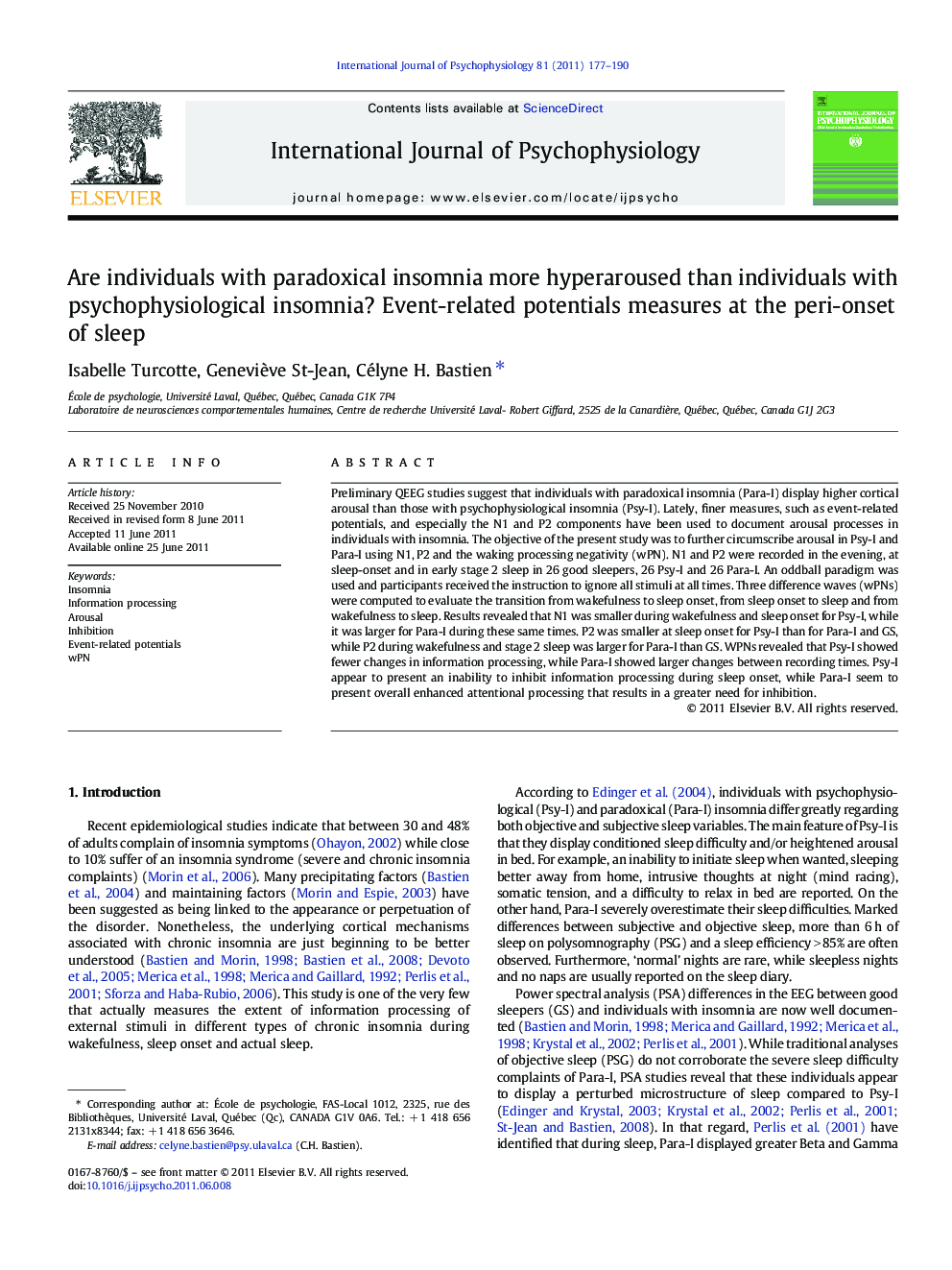| Article ID | Journal | Published Year | Pages | File Type |
|---|---|---|---|---|
| 930592 | International Journal of Psychophysiology | 2011 | 14 Pages |
Preliminary QEEG studies suggest that individuals with paradoxical insomnia (Para-I) display higher cortical arousal than those with psychophysiological insomnia (Psy-I). Lately, finer measures, such as event-related potentials, and especially the N1 and P2 components have been used to document arousal processes in individuals with insomnia. The objective of the present study was to further circumscribe arousal in Psy-I and Para-I using N1, P2 and the waking processing negativity (wPN). N1 and P2 were recorded in the evening, at sleep-onset and in early stage 2 sleep in 26 good sleepers, 26 Psy-I and 26 Para-I. An oddball paradigm was used and participants received the instruction to ignore all stimuli at all times. Three difference waves (wPNs) were computed to evaluate the transition from wakefulness to sleep onset, from sleep onset to sleep and from wakefulness to sleep. Results revealed that N1 was smaller during wakefulness and sleep onset for Psy-I, while it was larger for Para-I during these same times. P2 was smaller at sleep onset for Psy-I than for Para-I and GS, while P2 during wakefulness and stage 2 sleep was larger for Para-I than GS. WPNs revealed that Psy-I showed fewer changes in information processing, while Para-I showed larger changes between recording times. Psy-I appear to present an inability to inhibit information processing during sleep onset, while Para-I seem to present overall enhanced attentional processing that results in a greater need for inhibition.
Research highlights► This study employs event-related potentials (ERPs) to measure the extent of processing during wakefulness, the transition to sleep and during stage 2 sleep. ► Individuals with psychophysiological (Psy-I) and paradoxical Para-I insomnia are compared to good sleepers. ► The amplitude of N1 was reduced in Psy-I during wakefulness and the sleep onset period. ► The amplitude of P2 was enhanced in Para-I during wakefulness, the sleep onset period and stage 2 sleep. ► Psy-I showed the fewest changes in information processing from the waking to sleeping state, while Para-I showed the largest changes.
